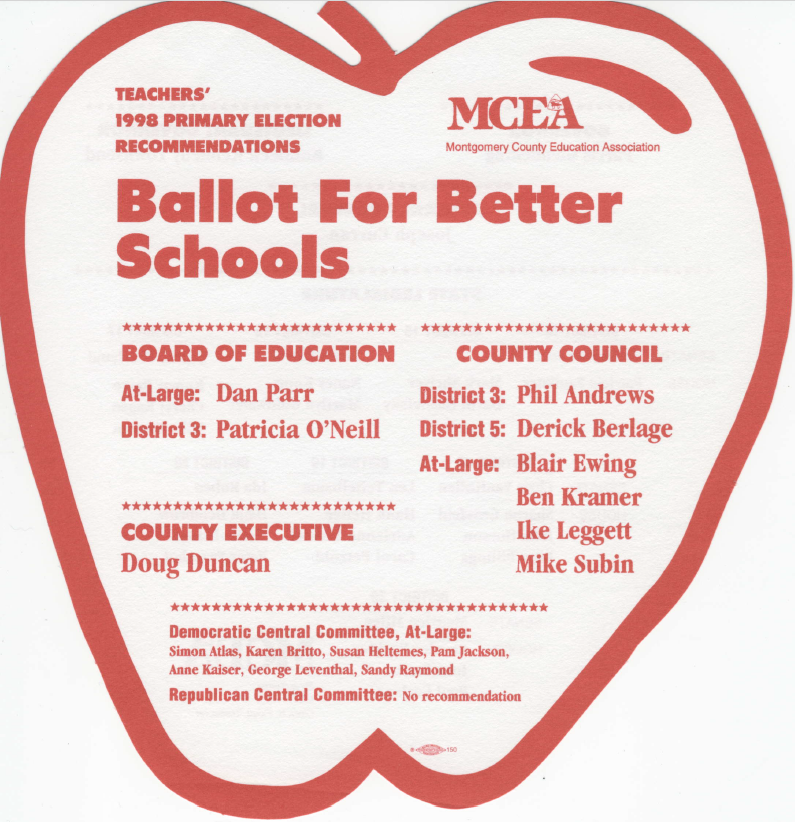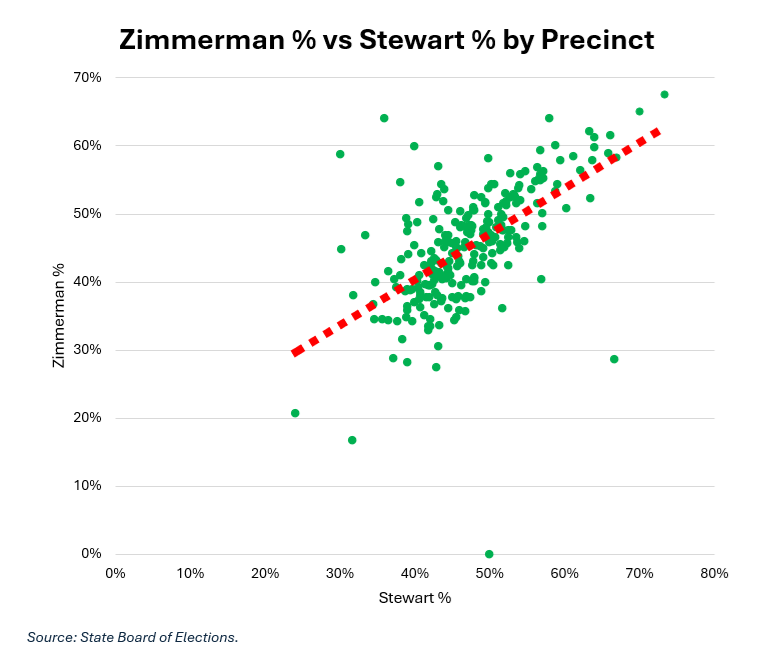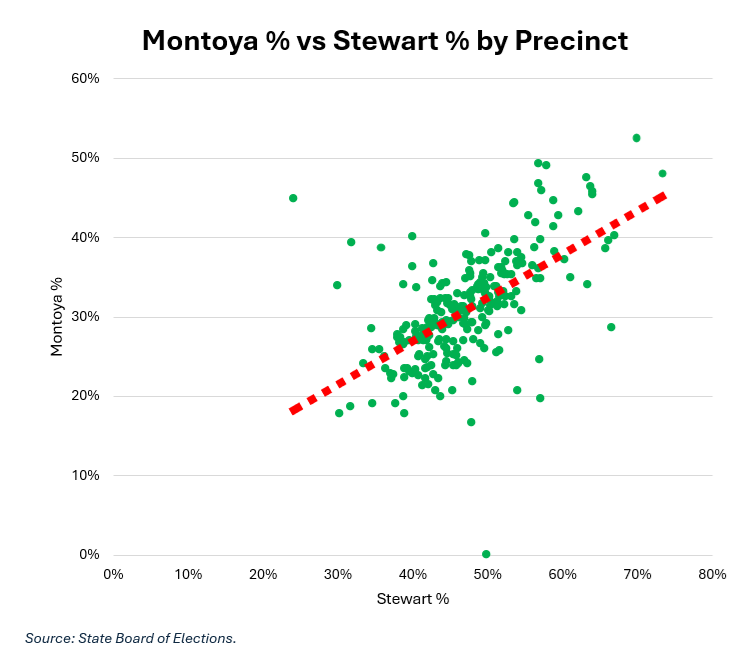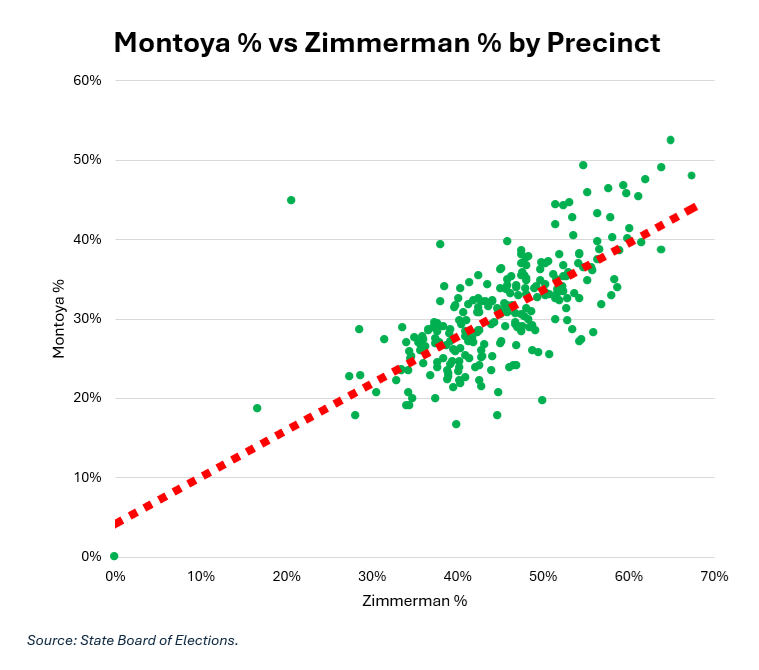By Adam Pagnucco.
As I did with voter turnout, I was originally going to crunch precinct results for the 2024 school board primary. After all, I have all of that data in the same file. But here is the truth: no one in that election had a significant campaign in hard, measurable terms. No one had any real money and I had heard of just one mailer and a couple robocalls and texts sent by all of the candidates combined. So what’s the point in analyzing a campaign that wasn’t a campaign?
And then this occurred to me: there actually was a campaign, just one of them. It was not by a candidate. It was by an organization – the Montgomery County Education Association (MCEA), wielder of the mighty Apple Ballot.
The Apple Ballot, which contains MCEA’s picks, has been one of the most influential endorsements in MoCo since the 1990s. Check out this post from 2010 in which local politicians debated the comparative merits of the Washington Post endorsement and the Apple Ballot, all off the record of course. MCEA trademarked both the Apple’s design and its associated phrase “teacher recommended” in 2009. Years ago, MCEA mailed custom-cut Apple Ballots to voters, a significant expense given its unusual shape, as a supplement to poll coverage. Now it is distributed at polls and through social media.

An Apple Ballot from the 1998 primary.
The challenge in assessing the effectiveness of the Apple Ballot is that it does not operate in a vacuum. Plenty of other factors – candidate fundraising, work ethic, other endorsements, campaign strategy, hot issues and lots more – impact elections, making it hard to isolate the Apple as an independent factor. However, in the 2024 school board primary, those extraneous factors were mostly minor or non-existent aside from general dissatisfaction with elements of the school system. This primary was as close as we may get to an election in which the Apple was the only major factor at play.
In assessing the Apple’s impact, one thing immediately jumped out at me from the data: the performances of its three endorsees – Rita Montoya (At-Large), Natalie Zimmerman (District 2) and Laura Stewart (District 4) – were correlated. I could see that in both scatter charts and correlation coefficients of precinct results.
First, let’s look at Zimmerman and Stewart. The scatter chart below plots percentage by precinct for each candidate.

See how the line of best fit slopes upward? The correlation coefficient of these two is +0.59, a moderate-to-strong positive correlation.
Now let’s look at Montoya and Stewart.

Again, the line of best fit slopes upward. The correlation coefficient of these two is again +0.59, a moderate-to-strong positive correlation.
Finally, here is Montoya and Zimmerman.

The line of best fit slopes upward and the correlation coefficient of these two is +0.72, a strong positive correlation.
It’s not a coincidence that all three of them have correlated performance. All three of them were on the Apple Ballot. Every Apple distributed to voters promoted each of them, a huge advantage not conferred on any other school board candidates.
We will start looking at geography next.
